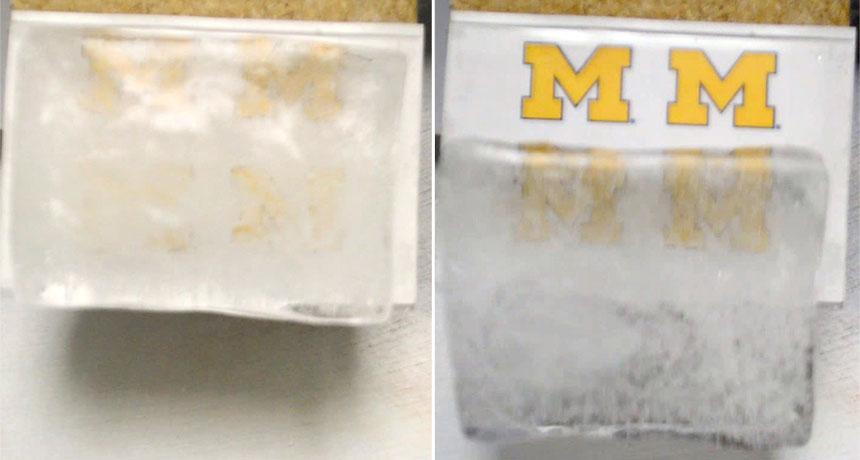New process encourages ice to slip, slide away
Adjusting density of polymer coating, adding lubricants creates durable repellents

FREEZE OUT Propelled by its own weight, an ice block easily slips off a surface treated with a new ice-repellent coating.
Kevin Golovin







